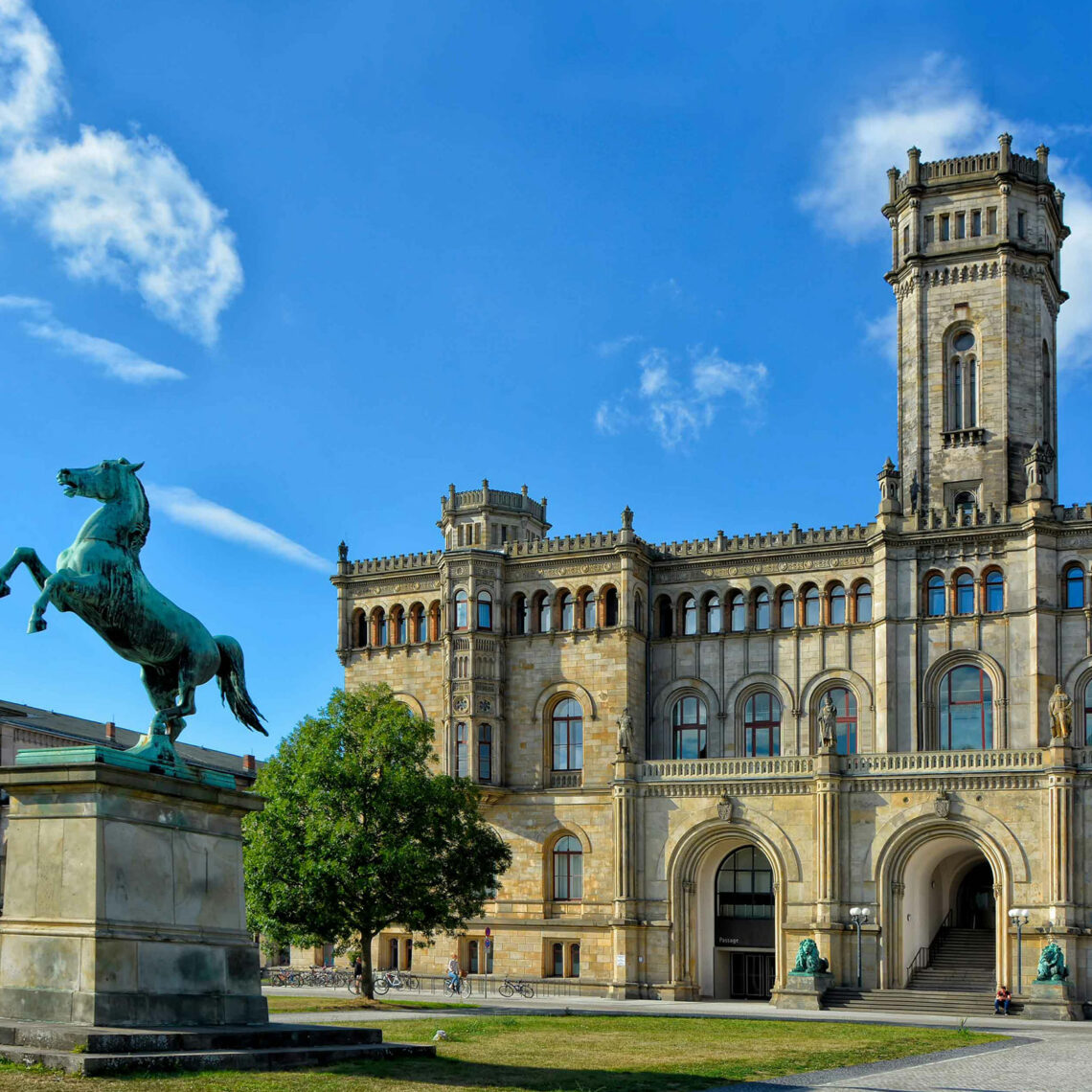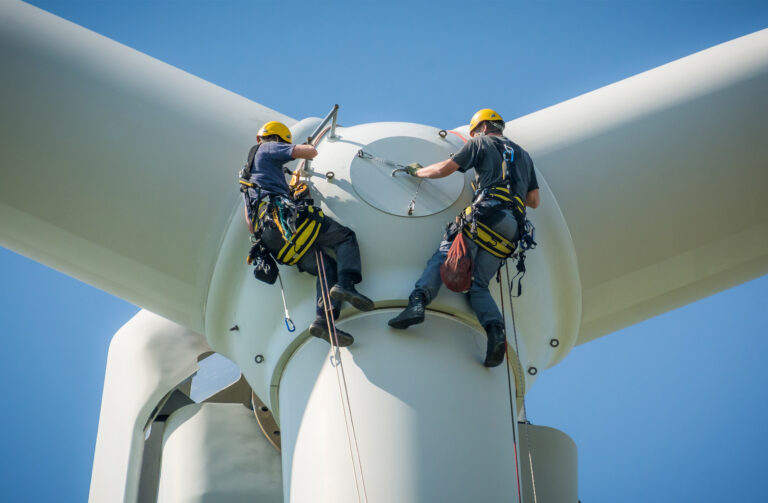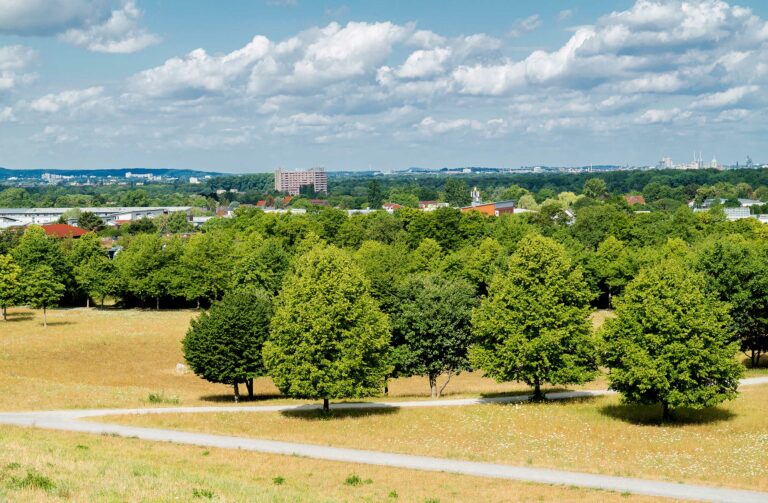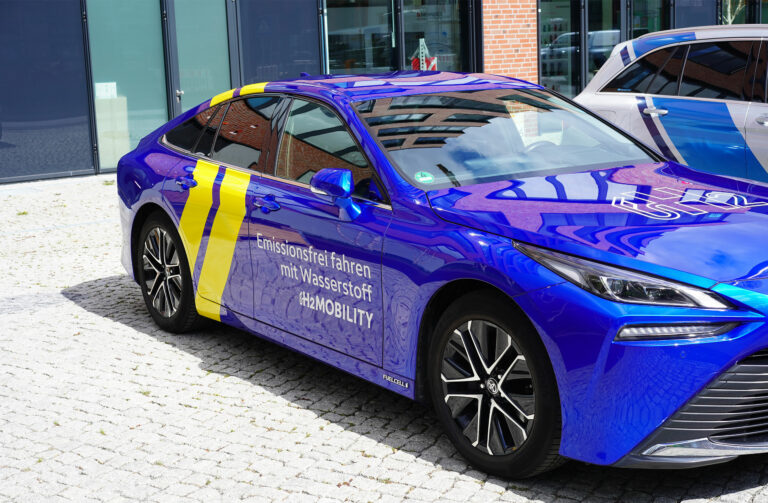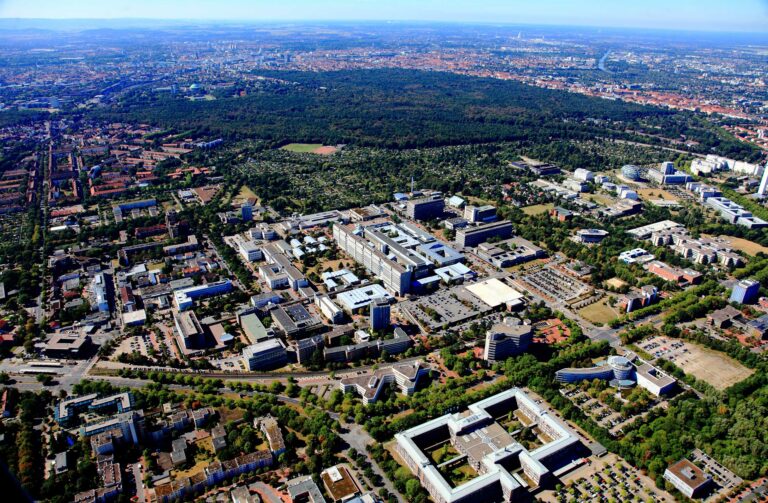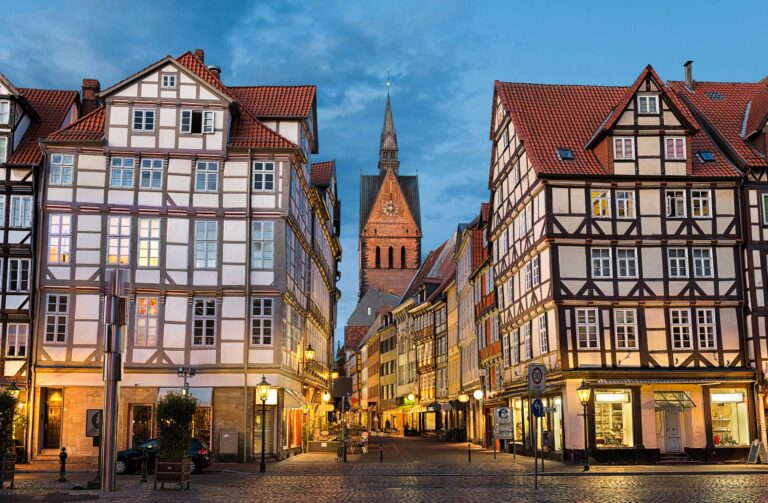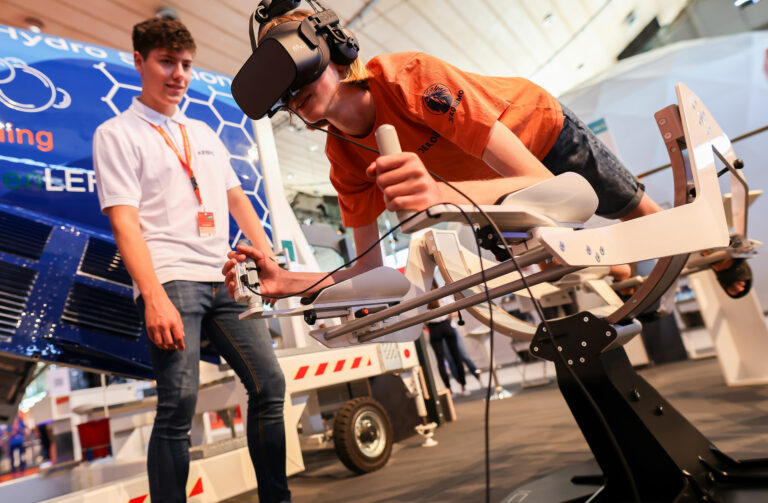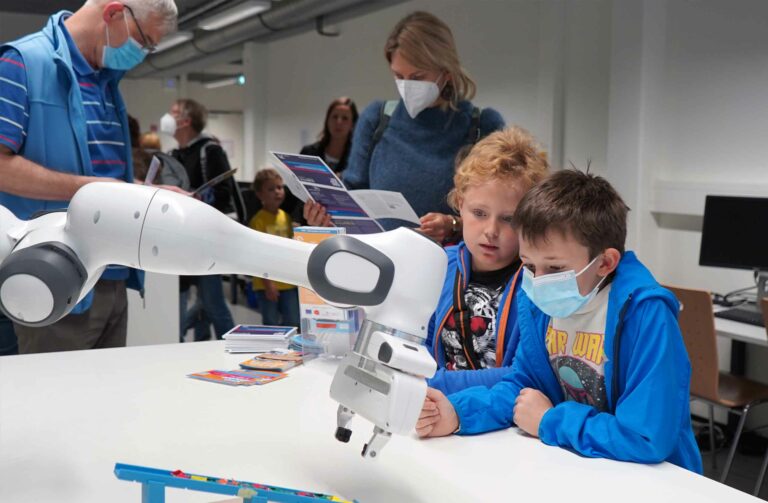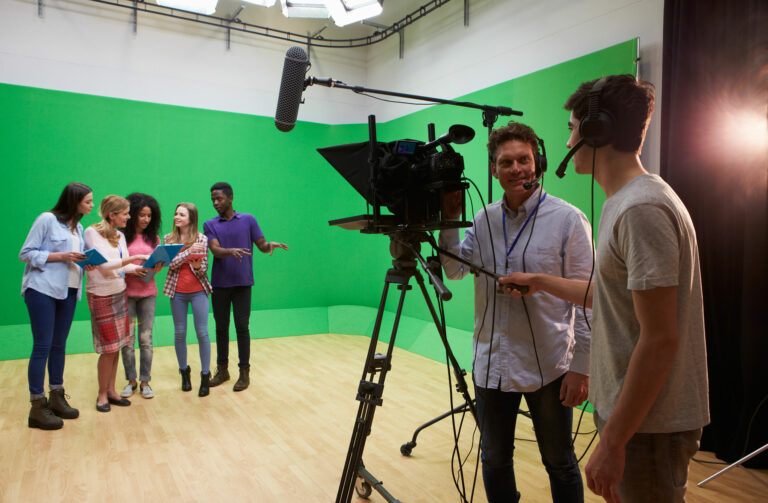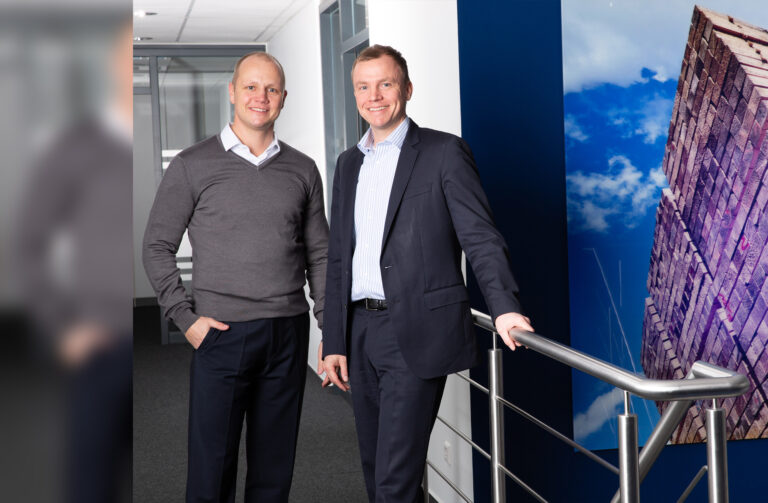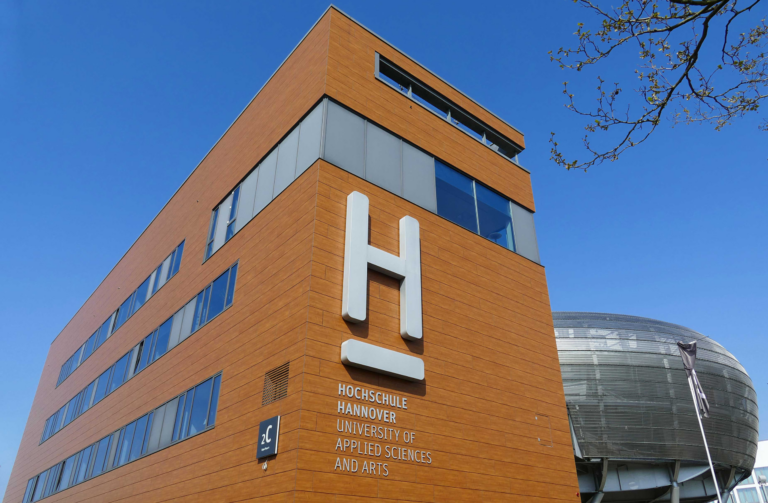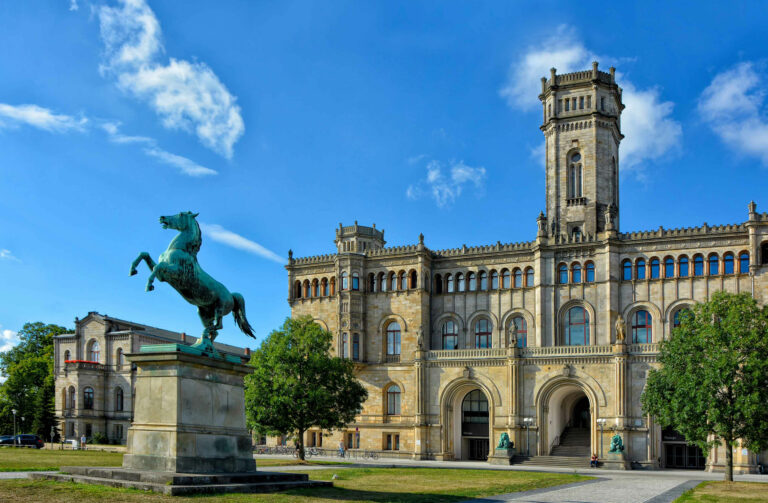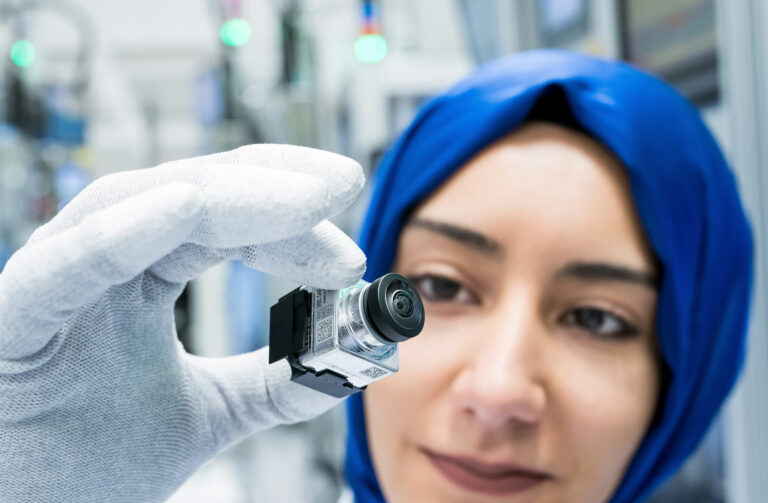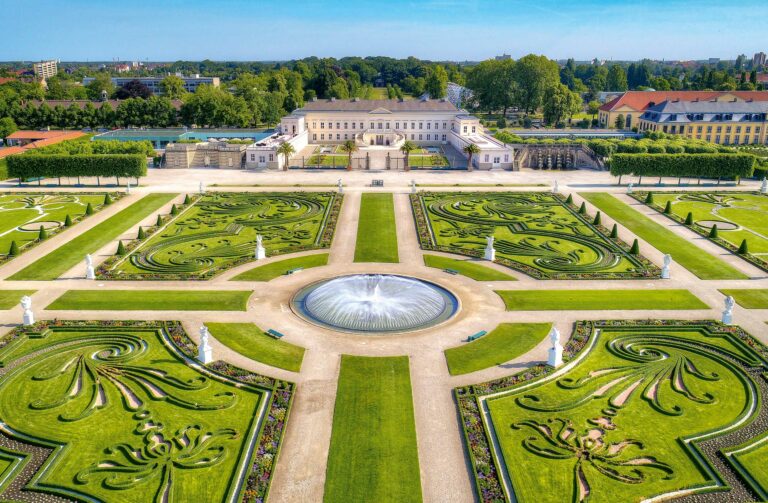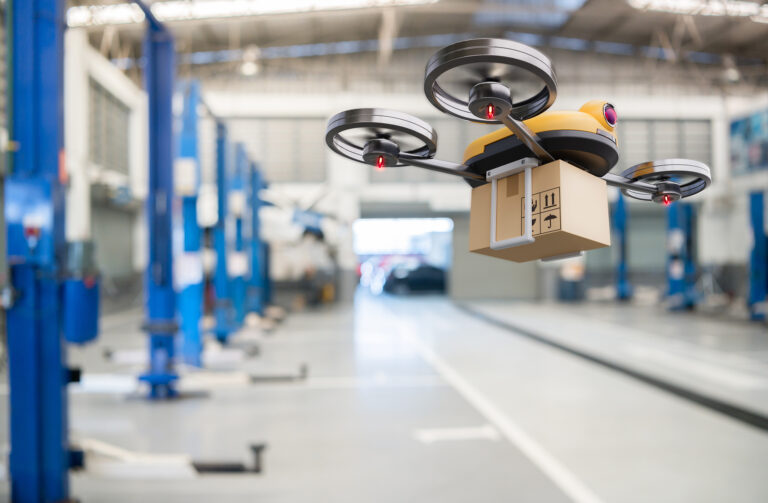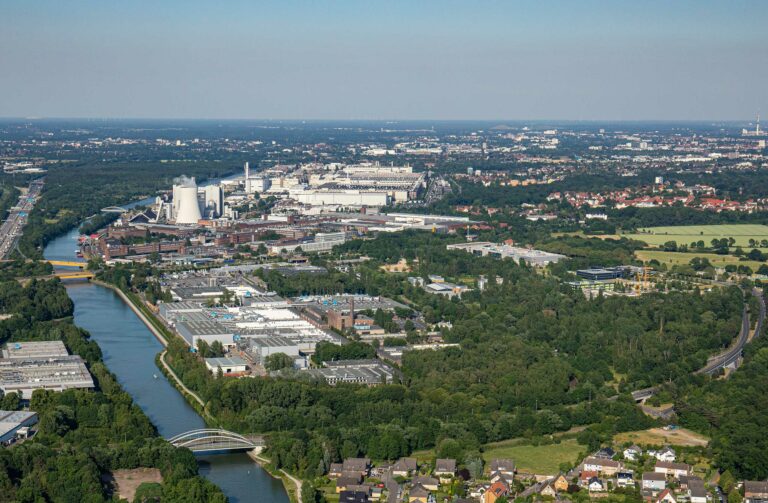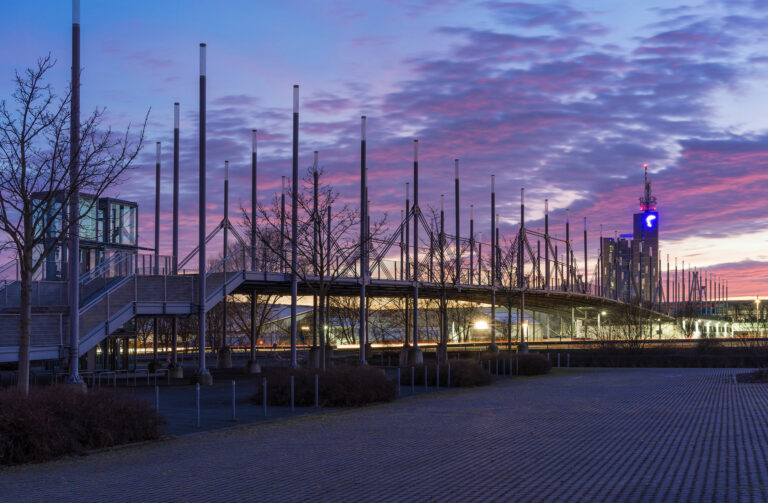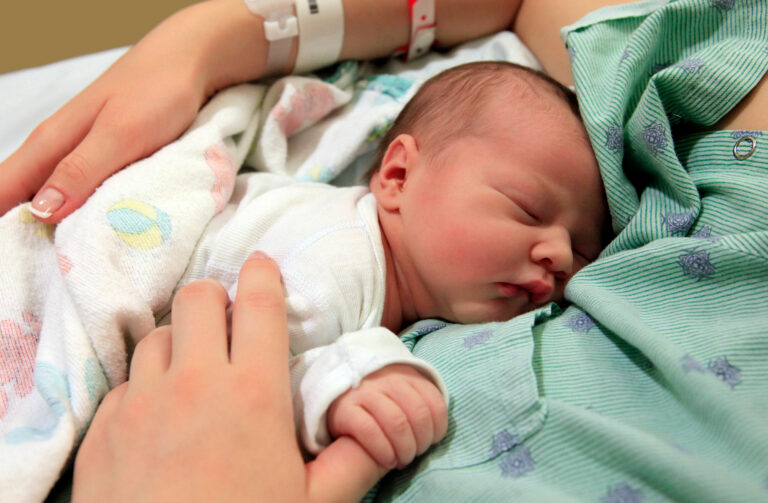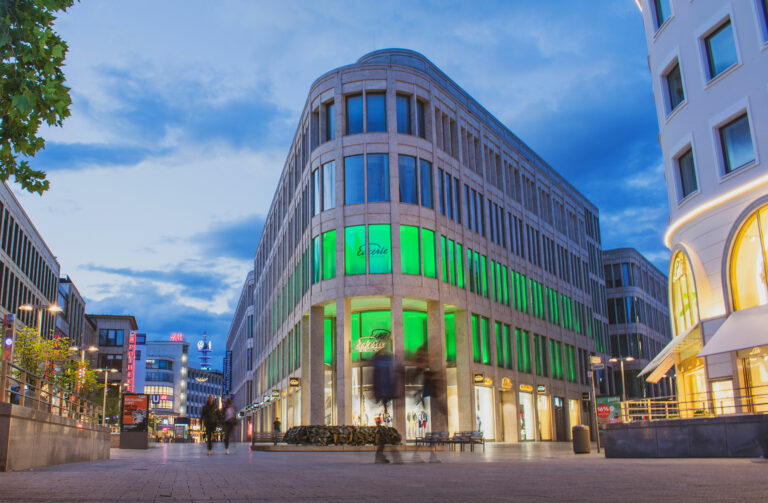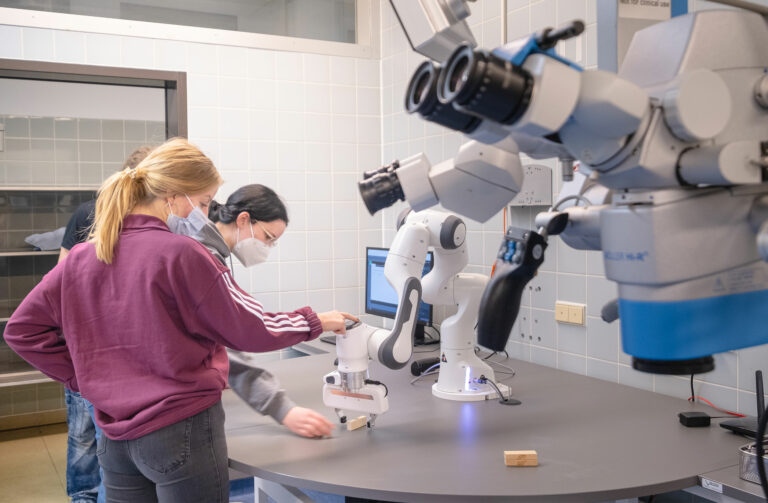Leibniz University – global mindset, interdisciplinary research
Any institution claiming the name of a universal genius such as Gottfried Wilhelm Leibniz must be set on a broad footing. This certainly applies here in Hannover, where Leibniz University has nine faculties offering 83 degree programmes. Quality and innovation are prerequisite for any university striving to be one of the nine leading Institutes of Technology in Germany (TU9). More about that later. And whoever seeks sustainable, peaceful and responsible solutions to the key issues of tomorrow, which is what Leibniz University aspires to, needs to facilitate interdisciplinary studies of science and knowledge transfer. This is precisely one of the key aspects in Hannover. And also the reason for a new research building in Hannover-Nordstadt.
Whether climate change, global food supply and energy supply, via water shortages through to healthcare, scientific knowledge is having to meet high expectations to solve all future challenges. It’s a case of disseminating and transferring knowledge in view of the great education and information deficits around the world.
Newbuild in Hannover-Nordstadt: Forum for Interdisciplinary Studies of Science
Prof. Dr. Volker Epping, President of Leibniz University Hannover, is therefore very taken with the new project: “I’m very pleased to see our humanities and social sciences being so successful, and it makes me proud that here at Leibniz University Hannover with our profile and aspiration, we are now the only one of the TU9 universities to have its own humanities and social sciences research building.”*
The new Forum for Interdisciplinary Studies of Science research building will be home to the following research groups and centres:
- the science philosophy group, which researches particularly with and into life sciences, natural sciences and technical sciences,
- the sociological science and higher education research group, with a focus on issues regarding social structure and macro-sociology,
- the Centre for Ethics and Law in the Life Sciences (CELLS), which is an international and interdisciplinary institute with Hannover Medical School and deals primarily with the ethical and legal implications of the life sciences.
- the Leibniz Centre for Science and Society (LCSS), with a focus on research into the reciprocal effects between university and science and society,
- the graduate college “Integrating Ethics and Epistemology of Scientific Research“, which is funded by the German Research Foundation,
- the LCSS graduate school “Science and Society”.
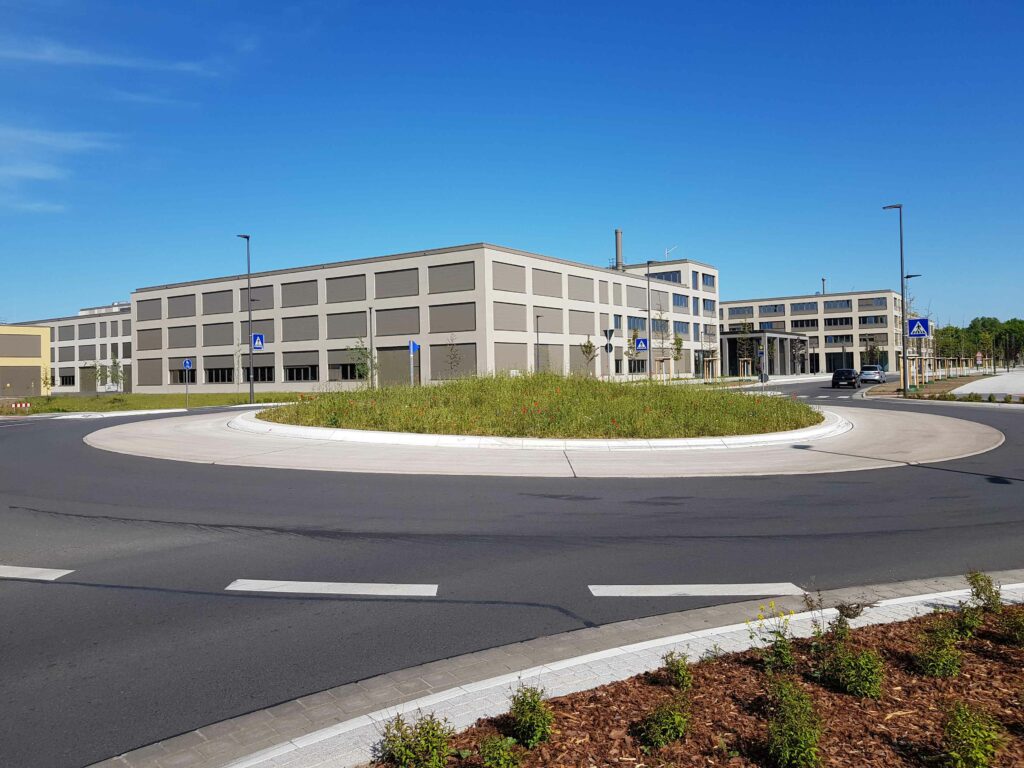
How it all began: Welfenschloss castle
The elegant research building with five floors and 2,000 square metres is located at the address Im Moore 23. It is located just a few steps from the university’s main building in the prestigious Welfenschloss castle which was commissioned by King George V in 1855 as a summer residence. Work on the building was interrupted when Prussia annexed the Kingdom of Hannover eleven years later, but the Royal Institute of Technology eventually moved into the premises in 1879. It had been founded back in 1831 by Karl Karmarsch as a vocational high school, with 64 students. It is almost breath-taking in the meanwhile to see what it has turned in to (see info box). By 1921 there were already three faculties for mathematics and science, civil engineering and mechanical engineering. It was then in 1991 that more than 30,000 students were registered at the university – what a success! The Welfenschloss is home to the university’s headquarters. The central hallway features an informative exhibition about the eponymous Gottfried Wilhelm Leibniz (1646–1716), who lived in Hannover for most of his life. Queen Sophie for example appreciated having inspiring conversations with him. They often strode through her Großen Garten in Herrenhausen.
Key issues for the world of tomorrow
The vast correspondence of Gottfried Wilhelm Leibniz has still not been completely evaluated. He has exemplary connections all around the world, and his curiosity to pursue research in all areas is contagious. It is therefore no great surprise that Leibniz University also offers four key research areas in addition to the interdisciplinary studies of science named above:
- Biomedical research and engineering
- Quantum optics and gravitational physics
- Optical technologies
- Production engineering
Research institutes today compete on a global scale. Leading the field, being innovative and attractive for researchers, teachers and students is a big task. Hannover manages this with the quality of what it offers and also with its “soft factors”. These include the green city, art and culture with plenty on offer, theatre and music together with relative low-cost housing. A spontaneous survey among foreign students in the main hall of the Welfenschloss produced the following results:
Jonathan (23 years), mechanical engineering student from South Africa: “I like this city, the Leine meadows, Maschsee lake, places where I can sit and learn without anyone disturbing me.”
Anna (21 years), architecture student from Belgrade: “I think connecting with other students is important. I quickly found a network of friends here.”
Nawid (26 years) from Syria: “Becoming a civil engineer is the greatest for me. I can do all that’s necessary here. I’m grateful to the city and to the uni.”
Jessica (25 years) from Tel Aviv: “I wanted to study philosophy in Germany. Hannover is the ideal place to do that: I feel close to Hannah Arendt, who was born here, where so much of what she really said has been preserved.”
Which disciplines are in demand? The most popular subjects among students are philosophy, electrical engineering and computer science, natural science, economics and mechanical engineering, followed by civil engineering and geodesy, mathematics and physics as well as architecture and landscape sciences. Philosophy accounts for the largest proportion of female students (64 percent) and electrical engineering the smallest (15 percent). Foreign students are to be found above all in mechanical engineering and electrical engineering (about 35 percent in each case). Eleven degree programmes are offered purely in English and another four with English specialisation, as well as six bilingual programmes. Degree programmes taught purely in English include energy technology, for example.
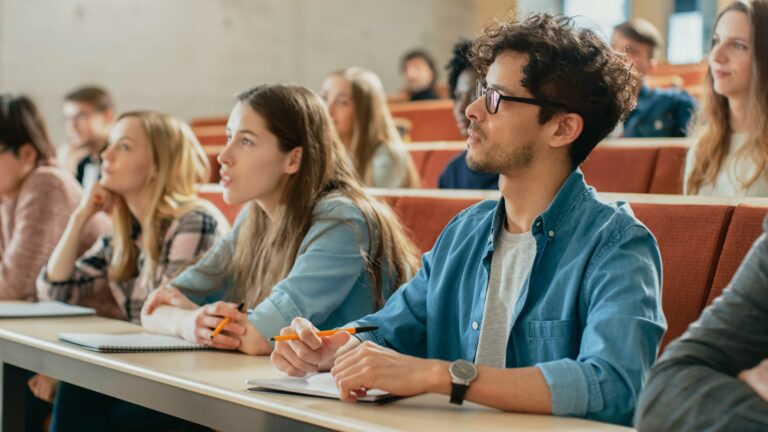
Energy technology: first in Finland, then in Hannover
This was the journey taken by Guiseppe Aracon from Peru for his four-semester Master’s degree in Energy Technology. The first year was taught at Lappeenranta Lahti University of Technology in Finland. “It was challenging to be in this setting so far north in Europe with its long, dark winters”, he says. “But I liked the project work, it was pretty laid back.” He has now just written his Master’s dissertation in Hannover. “The second part of the programme in Hannover is a real joy, but it is also a lot of work”, says Aracon. He has specialised in energy storage and energy efficiency. “Here there is expert specialist knowledge at my disposal and it is simply ideal to be able to share with students from other countries”, says the 28-year-old Peruvian. His German has improved as well. He is not sure yet where he wants to work one day. He’d love to go to Africa.
The university also offers three interesting schools. The focus is on advanced teacher training. They include Leibniz School of Education, which also now houses the Robotics Centre of Excellence for Robotics that supports the digitalisation master plan in schools. Leibniz School of Optics & Photonics is moving into a new research building in the Science and Technology Park Hannover-Marienwerder. QUEST Leibniz Research School looks into space/time research and quantum engineering. The aim is to coordinate the activities of various different faculties.
When it comes to sharing knowledge and entering into dialogue with the general public, another castle also plays an important role: Schloss Herrenhausen. It is located in the direct vicinity through the Georgengarten, and forms the entrance to the Großen Garten. The castle is used regularly by the university and the Volkswagen Foundation based in Hannover for colloquiums. It is an inspiring place that was already well appreciated by Leibniz.
Information
- 29,433 students, including 42% female students and 15% foreign students from 117 countries
- 5,203 employees including 3,361 in research and teaching with 357 professors
- 5,040 degrees and around 350 doctorates each year
- 143.2 million Euro third-party funding, including 56.1 million Euro from the German Research Foundation
- The largest sites are Schneiderberg, Welfengarten, Garbsen and Marienwerder, Königsworther Platz and Herrenhausen with altogether 351,646 square metres of effective floor space and a total of 162 buildings
- Leibniz University cultivates partnerships and cooperation in research and teaching with 134 universities all over the world
- What do foreign students mainly study? Electrical engineering and computer science, mechanical engineering, civil engineering and geodesy
For more, go to www.uni-hannover.de
Header picture: Jo.PinX/stockAdobe.com

